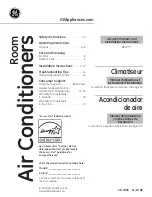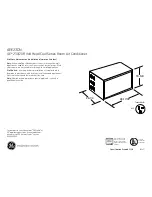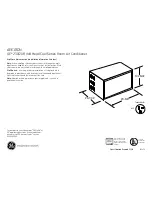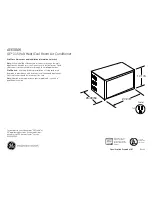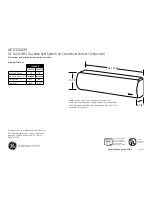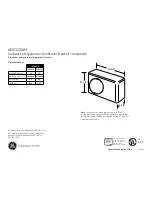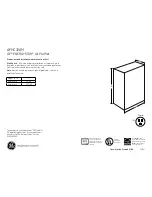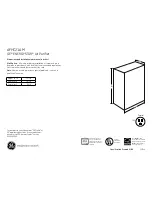
[1-3 Working with Refrigerant Piping ]
16 -
chapter 1
BS_01_G
1
Che
ck Bef
o
re
Se
rvicing
1-3-3
Vacuum Drying
1. Vacuum pump with a reverse-flow check valve (Photo1)
To prevent the vacuum pump oil from flowing into the refrigerant circuit during power OFF or power failure, use a vacuum
pump with a reverse-flow check valve.
A reverse-flow check valve may also be added to the vacuum pump currently in use.
2. Standard of vacuum degree (Photo 2)
Use a vacuum pump that attains 0.5Torr(65Pa) or lower degree of vacuum after 5 minutes of operation, and connect it directly
to the vacuum gauge. Use a pump well-maintained with an appropriate lubricant. A poorly maintained vacuum pump may not
be able to attain the desired degree of vacuum.
3. Required precision of vacuum gauge
Use a vacuum gauge that registers a vacuum degree of 5Torr(650Pa) and measures at intervals of 1Torr(130Pa). (A recom-
mended vacuum gauge is shown in Photo2.)
Do not use a commonly used gauge manifold because it cannot register a vacuum degree of 5Torr(650Pa).
4. Evacuation time
After the degree of vacuum has reached 5Torr(650Pa), evacuate for an additional 1 hour. (A thorough vacuum drying re-
moves moisture in the pipes.)
Verify that the vacuum degree has not risen by more than 1Torr(130Pa) 1hour after evacuation. A rise by less than
1Torr(130Pa) is acceptable.
If the vacuum is lost by more than 1Torr(130Pa), conduct evacuation, following the instructions in section 6. Special vacuum
drying.
5. Procedures for stopping vacuum pump
To prevent the reverse flow of vacuum pump oil, open the relief valve on the vacuum pump side, or draw in air by loosening
the charge hose, and then stop the operation.
The same procedures should be followed when stopping a vacuum pump with a reverse-flow check valve.
6. Special vacuum drying
When 5Torr(650Pa) or lower degree of vacuum cannot be attained after 3 hours of evacuation, it is likely that water has pen-
etrated the system or that there is a leak.
If water infiltrates the system, break the vacuum with nitrogen. Pressurize the system with nitrogen gas to
0.5kgf/cm
2
G(0.05MPa) and evacuate again. Repeat this cycle of pressurizing and evacuation either until the degree of vac-
uum below 5Torr(650Pa) is attained or until the pressure stops rising.
Only use nitrogen gas for vacuum breaking. (The use of oxygen may result in an explosion.)
(Photo1) 15010H
(Photo2) 14010
Recommended vacuum gauge:
ROBINAIR 14010 Thermistor Vacuum Gauge
0000005109.BOOK 16 ページ 2019年5月9日 木曜日 午前10時1分
Summary of Contents for City Multi CMH-WM250V-A
Page 1: ......
Page 11: ...GB_BS_01_G 0000005109 BOOK 2 ページ 2019年5月9日 木曜日 午前10時1分 ...
Page 37: ...GB_BS_02_E 0000004972 BOOK 2 ページ 2019年5月8日 水曜日 午後2時48分 ...
Page 67: ...GB_BS_03_E 0000004974 BOOK 2 ページ 2019年5月9日 木曜日 午後6時11分 ...
Page 91: ...GB_BS_04_E 0000004976 BOOK 2 ページ 2019年5月8日 水曜日 午後2時57分 ...
Page 119: ...GB_BS_05_E 0000004980 BOOK 2 ページ 2019年5月9日 木曜日 午後6時18分 ...
Page 149: ...GB_BS_06_E 0000004982 BOOK 2 ページ 2019年5月8日 水曜日 午後3時4分 ...
Page 163: ...GB_BS_07_E 0000004984 BOOK 4 ページ 2019年5月17日 金曜日 午前8時21分 ...
Page 391: ...GB_BS_09_C 0000005077 BOOK 2 ページ 2019年5月8日 水曜日 午後3時12分 ...
Page 409: ...GB_BS_10_E 0000004988 BOOK 2 ページ 2019年5月9日 木曜日 午前8時15分 ...
Page 436: ......


































